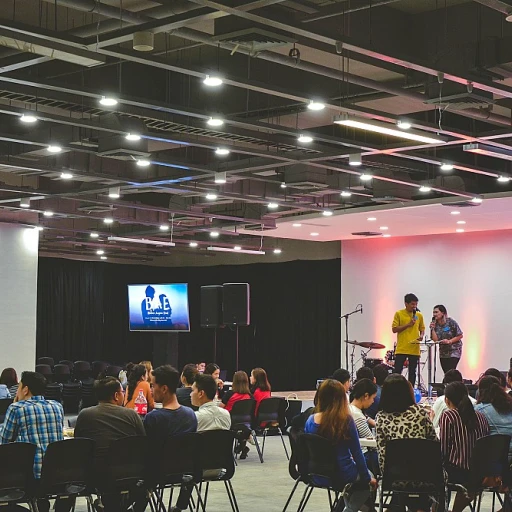
The Role of Employee Portals in HR Communication
Importance of Digital Platforms in HR Communication
The evolution of human resources has led to the introduction of digital platforms that streamline employee management and communication. These employee portals serve as a centralized hub for workforce engagement, providing seamless access to a range of HR services. These platforms offer businesses, both large and small, a solution for managing payroll, health care, retirement plans, and more, which are integral to keeping the workforce informed and satisfied.
For companies seeking effective business solutions, the implementation of a robust employee portal is a strategic move. The mosaic employee login provides online access for employees to not only view pay and manage time but also engage with their privacy policy and various HCM (Human Capital Management) solutions. As these platforms are often cloud-based, they ensure flexibility and scalability, empowering organizations to mitigate risk associated with data management.
The rise of integrated HCM solutions supports employee ownership over personal employment information, enabling them to handle their HR tasks directly. This transition reduces reliance on HR personnel for administrative tasks and enhances employee satisfaction through immediate access to support and assistance.
Furthermore, the ADP Workforce and similar platforms represent a comprehensive HCM solution that addresses the evolving needs of modern businesses. These systems provide an employee assistance program with features like view print options and payroll tax calculations, fostering a proactive approach to managing workforce complexities. As organizations continue to adapt, the role of digital employee portals will remain pivotal in shaping the future landscape of HR communication.
Understanding the Employee Mosaic Login Process
Decoding the Login Process
Understanding the role of employment short forms in HR communication can significantly enhance the login experience for employees. The Employee Mosaic Login is a critical gateway for accessing various HR services, including payroll, health care, and retirement plans. This login process is designed to streamline access to essential resources, ensuring that employees can efficiently manage their time and view their pay details.
Steps to Access the Employee Portal
For both large and small businesses, the login process typically involves a few straightforward steps:
- Visit the official Employee Mosaic platform or app.
- Enter your employee ID and password. This is often linked to your ADP Workforce account for integrated HCM solutions.
- Follow any additional security prompts to verify your identity, ensuring data privacy and mitigating risk.
Once logged in, employees can access a range of services, from viewing and printing pay stubs to managing time and exploring employee assistance programs.
Support and Assistance
For employees encountering issues during the login process, support is readily available. Many platforms offer a comprehensive FAQ section to address frequently asked questions. Additionally, HR departments often provide direct assistance to help employees navigate any challenges, ensuring seamless access to the portal.
Ensuring a Smooth Experience
To enhance the user experience, businesses are increasingly adopting cloud-based solutions that offer robust support and flexibility. This approach not only improves online access but also aligns with the evolving needs of the workforce, providing a scalable solution for employee ownership and engagement.
Security and Privacy Concerns in Employee Portals
Safeguarding Information in Employee Portals
In an age where business operations and data are increasingly digitized, it's imperative to address security and privacy concerns associated with employee portals. These platforms often house sensitive employee data, including payroll information, health care benefits, and retirement plans. Employers must therefore implement robust measures to mitigate risk and protect the privacy of users.
Firstly, ensuring that the login and authentication processes are secure is crucial. Cloud-based solutions often integrate advanced security protocols, such as multi-factor authentication, to safeguard online access. It's vital for the systems handling these data entries to follow a strict privacy policy, offering multiple layers of protection against unauthorized access.
Moreover, leveraging integrated HCM solutions like Mosaic Employee and ADP Workforce allows businesses to centralize and manage information securely. These platforms provide tailored HCM support and tools to monitor employee assistance services while ensuring compliance with payroll tax regulations and industry standards.
To further enhance data protection, frequent system audits and updates should be part of standard practice. This helps in identifying vulnerabilities that could potentially be exploited. Providing users with frequently asked questions and guidelines about security measures can also empower employees to play an active role in safeguarding their information.
Finally, fostering open lines of communication about data privacy and security builds employee ownership and trust in the platform. This can be crucial for enhancing usage and engagement, as highlighted in how effective communication impacts portal usage.
Enhancing User Experience in Employee Portals
Boosting User Interaction Through Intuitive Design
Employee portals play a crucial role in streamlining HR communication, but the user experience can often dictate the level of engagement. Enhancing this experience is not just about aesthetics but ensuring that the portal is user-friendly and intuitive. Simple navigation can make it easier for employees to access essential services like payroll and view their work schedules without frustration. An integrated HCM solution should provide an interface that employees find easy to understand and use. Features such as personalized dashboards that offer an at-a-glance view of relevant data, like pay, retirement plans, and employee assistance options, can significantly improve the usability of the portal. Moreover, providing seamless online access to critical information, including payroll tax details and health care services, aligns with the needs of a diverse workforce. Whether it is a small business or a large enterprise utilizing an ADP workforce platform, the functionality remains the same: to simplify the process of managing time and responsibilities.Ensuring Support and Accessibility
Support is also a vital component of the user experience, especially when employees encounter issues during login or when navigating the Mosaic employee app. Offering an easily accessible help section or frequently asked questions can alleviate concerns rapidly, ensuring that support is both immediate and effective. In addition to support features, ensuring privacy policy compliance is essential to mitigate risk. A transparent approach to how employee data is handled fosters trust and encourages user engagement. By addressing the accessibility needs of all employees, businesses can create an inclusive environment that leverages the full potential of human resources tools.Leveraging Technology for a Seamless Experience
With technology rapidly evolving, the shift toward cloud-based platforms offers a scalable solution for improving user experience. Businesses should consider leveraging advancements in technology to provide a seamless experience across different devices, ensuring consistent access whether employees are using desktops, tablets, or mobile devices. By investing in a platform that prioritizes ease of use and accessibility, companies can not only enhance user experience but also improve the overall efficiency of their HR communication systems. Mosaic solutions and similar tools are instrumental in fostering a productive business environment, enabling employees to take full ownership of their work and responsibilities.Conclusion
Ultimately, the effectiveness of an employee portal is determined by how well it serves its users. By focusing on enhancing the user experience, businesses can increase engagement, streamline HR communication, and drive productivity. An intuitive design, comprehensive support, and leveraging the latest technology are all key factors in ensuring that an employee portal is a valuable resource for any organization.The Impact of Effective Communication on Portal Usage
Driving Effective Portal Usage Through Communication
The effectiveness of an employee portal is not solely dependent on its technical features or the solutions it provides, such as integrated HCM, payroll tax management, or employee assistance services. Successful portal adoption and usage heavily rely on communication strategies designed to educate, support, and engage employees. An effective communication plan should encompass various elements:- Clear Instructions: Detailed guidelines on how to log in, view pay, manage time, and access data are crucial. This reduces confusion, saving time for both employees and the HR teams tasked with support. Quick how-to guides or FAQs can make the learning process faster for new users, particularly in large platforms.
- Regular Updates: Communicating updates about platform changes, new features in the mosaic solution, or any shifts in privacy policy is vital in maintaining trust. Regular newsletters or updates on the employee app can keep the workforce informed and engaged.
- Feedback Mechanisms: Establish channels where employees can easily provide feedback or ask questions. This not only helps in improving the system based on practical usage but also fosters a sense of employee ownership. When employees feel heard, their willingness to utilize and engage with the portal increases.
- Support and Help: Offering extensive support through accessible resources is essential. This can be through an online access help desk or a dedicated support team that understands the intricacies of the ADP workforce and other integration components. This ensures that employees feel they have ample support when needed.
- Community and Collaboration: Encouraging community forums or discussion boards about common issues or frequently asked questions can mitigate risk by allowing employees to learn from each other's experiences. This peer support system often provides help faster than formal channels.












